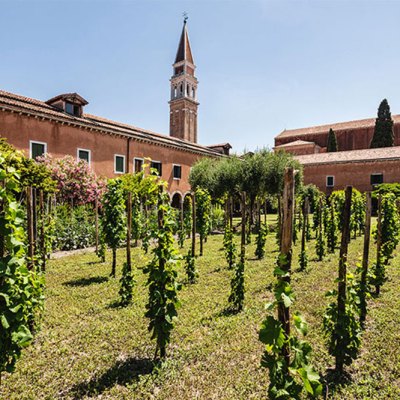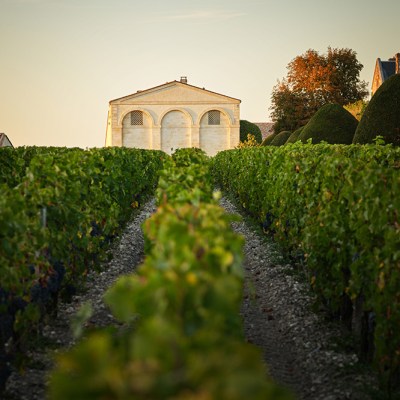From the February 2023 issue of Apollo. Preview and subscribe here.
A visit to the Vintners’ Hall in the City of London – ‘the spiritual home of the wine trade’, according to Edward Berry, current master of the Worshipful Company of Vintners – is an excursion into the history of the wine trade in England since medieval times. Step through the facade on Upper Thames Street and you are stepping into six centuries of multi-layered English architectural history on one site. The original Vintners’ Hall was built in 1446, but destroyed in the Great Fire of London, among what William Herbert, in his 1887 history of the 12 great livery companies, called ‘intolerable exaction, spoliation, and calamity’. Impressively and unusually, rebuilding of the Hall started immediately after the fire was extinguished, and was completed in 1671. It has a smaller frontage now than in the late 17th century, when it followed the standard layout of a medieval domestic house, like many Oxbridge colleges, with an entrance gate to a courtyard, rooms on each side of this, and a hidden garden of mulberry trees: a painting in the collection from 1810 by George Shepherd documents this architectural style. The Company added a modern office block, designed by Whinney Mackay-Lewis Partnership in 1992, with a portico and marble floor based on St Peter’s Basilica in Rome.
The Vintners, along with the Fishmongers, Mercers, Drapers and the rest of the Great Twelve livery companies of the City of London, trace their roots to the Middle Ages, when they functioned as guilds, regulating trade, controlling labour conditions and wages. The wine they were selling then was not the pure, bottled concoction we enjoy today, but rather traded in barrels, cut with spices, water and other ingredients. The Company controlled the distribution of wine in medieval England, and its first charter, in 1363, granted it a monopoly of the wine trade with Gascony.
After a second charter in 1437 granted it permission to hold property in perpetuity, the Company acquired the site today next to the church of Saint James Garlickhythe, named for the landing stage from which French garlic and wine were imported and unloaded. The Company was responsible for the upkeep of this church, rebuilt in 1326 by the vintner Richard de Rothing, who was Sheriff of London. Destroyed in the Great Fire, it was rebuilt again by Christopher Wren and known as ‘Wren’s lantern’ because of its large number of windows. The hall stood in the City’s Vintry ward, where the wine trade was concentrated: the Company was responsible for the upkeep of the ward and was integrated into every facet of life for its members, caring for their elderly, schooling their children. The Company’s collection of objects includes a large Coade stone figurine from c. 1840 of a Vintry charity schoolboy, which stood outside the Vintry Ward School and was rescued from a Blitz bomb (his schoolgirl companion was lost in the rubble).
Various accoutrements of the Company’s long history are on display in the Hall. A hearse cloth donated by John Husee (Master 1528–31) and intended to be used at all funerals of members is one of only a dozen surviving from that period, seven of which are owned by livery companies. Embroidered with English thread, it depicts the Virgin Mary holding the body of Christ; a memento mori skeleton digging graves among vineyards; and Saint Martin, patron saint of wine, dividing his coat with a beggar and giving alms to a cripple (charitable giving remains a major pillar of the Company); these scenes are intertwined with vine and grape flora. The central panel is made of Italian silk and features a gold and red pomegranate design. It was last used in 1931 when the master of the time, Captain Maidion Byron Bickenell, died in office.
Coconut cup (1518) unknown maker. Worshipful Company of Vintners, London

Also on display in the Hall is a gold-mounted coconut cup from 1518, given to the Company in 1548 by Ralph Davy. Such rare goblets were prized possessions among the elite in the 16th century, when coconuts were exotic and extravagant and highly sought after because it was believed they could reveal poisoned wine. The goblet survived the Fire, but many other gold and silver objects were sold to pay for the Hall’s rebuilding.
Beneath the Vintners’ courtroom, where the governing body holds its meetings, is the Red Cellar – one of the oldest cellars in the country, pre-dating the Great Fire. It has a capacity of 16,000 bottles, so that the livery can hold stock for 30 or more years. In keeping with a spirit of hard work, charitable deeds and celebration, the Company holds wines for consumption and enjoyment, rather than as investment. The oldest bottle in the cellar is an 1867 Cossart Gordon Bual Madeira, but apart from some older ports, most of their wines are post-2000 vintages. Bordeaux, Burgundy, the Rhône and Germany are heavily featured, though New World wines and even English wines, such as Nyetimber, are now entering the collection.
The wines are served at the Company’s annual dinner, having been selected by the Wine Committee, which comprises members of the Company, including Masters of Wine and experienced wine merchants. At their dinners, the Vintners’ sing the song written for them by Elkanah Settle in 1702: ‘Come, come, let us drink the Vintners’ good health, ’Tis the cask, not the coffer, that holds the true wealth,’ it begins, and ends with a truth known to all wine drinkers: ‘The Vintners’ rich juice gives health, life and joy.’
From the February 2023 issue of Apollo. Preview and subscribe here.


